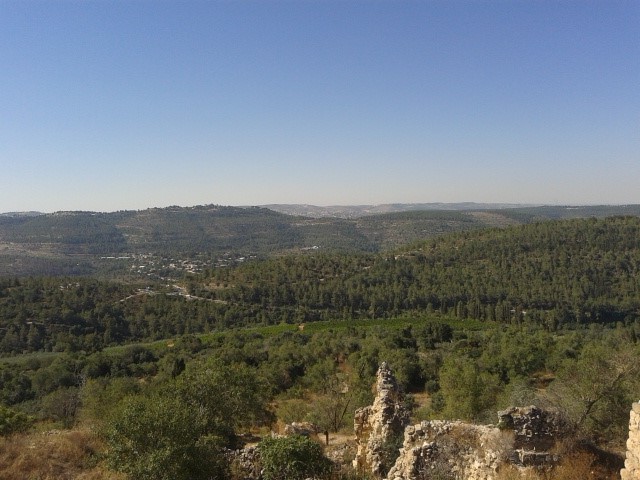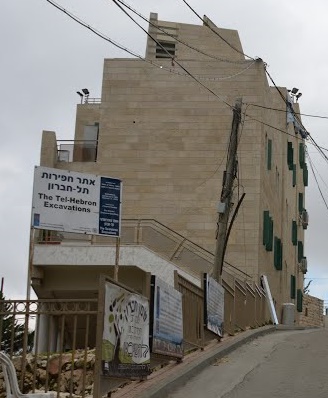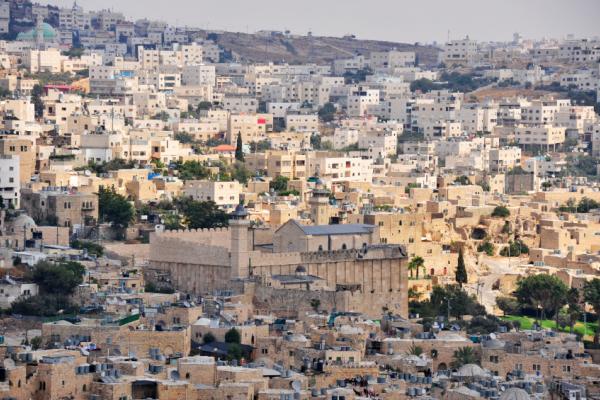
 I’m pleased to announce a new feature on this blog, which will appear in addition to the type of posts I’ve been writing until now. The new feature is called “Torat Ha’aretz” (the Torah of the Land), and will be dedicated to exploring the unique and wondrous Land of Israel from a Torah perspective.
I’m pleased to announce a new feature on this blog, which will appear in addition to the type of posts I’ve been writing until now. The new feature is called “Torat Ha’aretz” (the Torah of the Land), and will be dedicated to exploring the unique and wondrous Land of Israel from a Torah perspective.
In mind, there are actually two different aspects to the “Torah of the Land”.
First, there is the fact that the opportunity to live in and explore the Land of Israel (and to conduct archaeological excavations and other forms of scientific research) enables us to understand the Torah better. There are numerous examples of this phenomenon, and one that I am fond of quoting is from the Torah portion we read last week in the Synagogue.
When our Patriarch Yaakov sent his son Yosef on the ill-fated mission to see his brothers in Shechem, it says that he sent him “Me’Emek Chevron”, from the Valley of Hebron (Bereishit 37:14). The great medieval commentator Rashi expresses puzzlement at this expression. What, asks Rashi, is the Valley of Hebron?? “But we know that Hebron is on a mountain, since it says (Bamidbar 13:22) 'they ascended from the South…to Hebron’!”
Unable to reconcile the apparent contradiction between those two verses, Rashi concludes (based on a Midrash) that the phrase “Emek Chevron” must be a metaphor, referring to the “deep counsel of the righteous one who is buried in Hebron”. According to this interpretation, the expression indicates that Yosef’s journey to the North, which set into motion the descent of the Children of Israel to Egypt, was the fulfillment of the Divine prophecy previously revealed to our forefather Avraham.

When I take people to Hebron, I am fond of bringing them to the rooftop of a building known as “Bet Menachem”, in the Tel Chevron/Tel Rumeida neighborhood. This apartment house is built on top of excavations revealing ruins over 4000 years old. This is the city where Yaakov lived, and as indicated by the verse in Bamidbar, it is indeed on a mountain. From atop the roof, one has a clear view of Ma’arat HaMachpela/the Cave of the Patriarchs, in the valley below. That’s the “Valley of Hebron” referred to in Bereishit.

Rashi never had the privilege that we have, to stand in this spot. Doing so enables us to gain a deeper insight into the Midrash that Rashi quoted; Hebron is on a mountain, and there is also a Valley of Hebron. That valley is where “the righteous one” who received the “deep counsel” is buried. When the Torah says that Yaakov sent Yosef from the “Valley of Hebron”, the expression has two levels of meaning. Yaakov apparently escorted Yosef out of the city to the valley below, and it was from there that he sent him on his journey. Unbeknownst to Yaakov at the time, though, he was not merely sending him on a routine trip beginning in the Valley of Hebron, but on a meta-historic journey into exile and redemption from which the People of Israel would ultimately emerge, fulfilling the “deep counsel of that righteous one who is buried in [the Valley of] Hebron”.
There is also a second aspect to the Torah of the Land. In addition enabling us to better understand the texts of the written and oral Torah, the land also teaches us Torah on its own.
The Land of Israel is an extremely fascinating place. It is geographically situated at the crossroads of three major continents, and in an extremely small space contains unique geological phenomena, a rich variety of topographical and climate zones (where else can you go skiing in the snow, swimming at a beach and hiking in a desert all on the same day, without using an airplane?), providing habitats for a wide variety of plants and animals (many of which are the basis of images used in the Bible) and some of the world’s most ancient civilizations. It’s also been the destination of pilgrimages by people of various faiths, battles of armies and empires, and the forum for the incredible story of the rebirth and renewal of the Jewish people in the State of Israel. The Land itself has lessons to teach us, and by studying it, we can learn a different form of Torah Ha’aretz.
Each of these posts will briefly examine a site or aspect of the land of Israel, and point to aspects of Torat Ha’aretz we can learn from them. The first one is coming, b’ezrat Hashem, later this week. I hope you enjoy!

Sign up for my newsletter for periodic articles along with updates on new talks, classes and videos, and upcoming speaking engagements and public tours